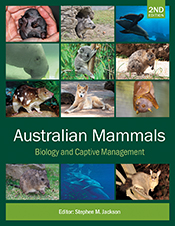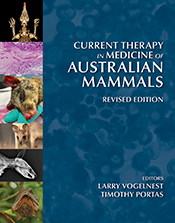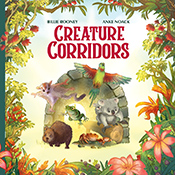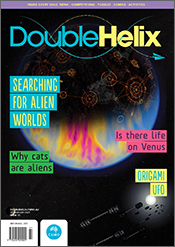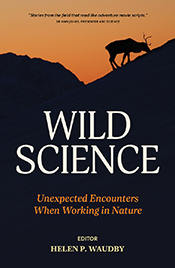Advances in Reintroduction Biology of Australian and New Zealand Fauna
Edited by: Doug P Armstrong, Matthew W Hayward, Dorian Moro, Philip J Seddon
A review of the process of reintroductions and other conservation-driven translocations in Australasia.
The publication of Reintroduction Biology of Australian and New Zealand Fauna nearly 20 years ago introduced the new science of ‘reintroduction biology’. Since then, there have been vast changes in our understanding of the process of reintroductions and other conservation-driven translocations, and corresponding changes in regulatory frameworks governing translocations. + Full description
Advances in Reintroduction Biology of Australian and New Zealand Fauna is a timely review of our understanding of translocation from an Australasian perspective, ensuring translocation becomes an increasingly effective conservation management strategy in the future. Written by experts, including reintroduction practitioners, researchers and policy makers, the book includes extensive practical advice and example case studies, identifies emerging themes and suggests future directions.
Conservation practitioners and researchers, as well as conservation management agencies and NGOs will find the book a valuable resource. Although it is based on Australasian examples, it will be of interest globally due to synergies with reintroduction programs throughout the world.
2015 Whitley Awards Certificate of Commendation for Conservation Biology.
- Short descriptionReviews
"This book not only enumerates advances in reintroduction but also provides a cogent roadmap for understanding and applying current knowledge, and for developing future strategies... Credibility is particularly important in reintroduction science where participants are diverse, potentially resulting in clashes of opinion. This book, with its range of author affiliations and its high degree of readability, hits the mark on credibility and will appeal to a range of practitioners. It provides enough detail to hold the attention of advanced practitioners but also provides basic information without condescension."
Erin Muths, The Journal of Wildlife Management, Vol 80(3), 2016, pp 579-580
"This is a timely book. Fauna translocations in Australia and New Zealand have all too often been done in an ad hoc fashion. Because methods and outcomes were rarely published, those planning new translocations generally had to reinvent the wheel. By collating thinking and research on how best to reintroduce indigenous fauna in a single volume, the editors of Advances in Reintroduction Biology have created a very useful resource for those working in this challenging field... a much needed one-stop reference."
Ron Moorhouse, Conservation Biology, 00(0), 2016, pp 1-3
"Packed with case studies, guidelines, and future directions, this text offers not only a thorough review of reintroduction theory but acts as an up-to-date manual for the practice of faunal reintroduction. Given the current ecological crisis and increasing move towards animal reintroductions, managers and researchers stand to gain much from having such a book handy, as do our native wildlife."
Christopher McCormack, Wild Melbourne (blog), 12 October 2015
"the book centres on Australasian examples, but there is much excellent work described in the book which deserves to be read by all those involved in reintroduction programmes wherever they are based."
British Ecological Society Bulletin, December 2015, pp 67
"In this climate of growing threats to biodiversity, we need Advances in Reintroduction Biology. It will be a valuable guide to reintroduction now, and hopefully we will see a second edition [within ten years]."
Don Driscoll, The Victorian Naturalist, 133(6), 2016, pp 212-213
Details
Paperback | May 2015 | $ 89.95ISBN: 9781486303014 | 320 pages | 270 x 210 mm
Publisher: CSIRO Publishing
Graphs, Line Art, Photographs
ePDF | May 2015
ISBN: 9781486303021
Publisher: CSIRO Publishing
Available from eRetailers
ePUB | May 2015
ISBN: 9781486303038
Publisher: CSIRO Publishing
Available from eRetailers
Features
- Comprehensive account of Australasian reintroduction biology over the last 20 years
- Identifies emerging themes and suggests future directions
- Includes extensive practical advice and example case studies
- Written by highly experienced and authoritative authors, including reintroduction practitioners, researchers, and policy makers
- Topics include: key questions in reintroduction biology; population establishment; prey naivety; disease management; dispersal; the roles of trials and experiments; modelling projections; assisted colonisation; population interchange; genetic diversity; disease management; metapopulation dynamics; reintroduced species as ecological engineers; the contributions of sanctuary networks and zoos; and extensive insights from reintroduction programs
Contents
1. Introduction: the development of reintroduction biology in New Zealand and Australia2. Release strategies for fauna reintroductions: theory and tests
3. Structured decision making for designing complex release strategies
4. The influence of predators and prey naivety on reintroduction success: current and future directions
5. Disease-risk management in reintroduction
6. Considering dispersal in reintroduction and restoration planning
7. The roles of trials and experiments in fauna reintroduction programmes
8. Advances in modelling projections for reintroduced populations
9. Proactive conservation or planned invasion? Past, current and future use of assisted colonisation
10. Conserving and enhancing genetic diversity in translocation programmes
11. Metapopulation management of an extreme disease scenario
12. Using reintroduction to compensate for isolation in fragmented landscapes
13. Policy implications of ecosystem engineering for multiple ecosystem benefits
14. The impact of private of sanctuary networks on reintroduction programmes
15. Advances in the contribution of zoos to reintroduction programmes
16. Forty years of fauna translocations in Western Australia: lessons learned
17. Underwater, out of sight: lessons from threatened freshwater fish translocations in Australia
18. Practical guidelines for planning and implementing fauna translocations
19. Evolution of the translocation approval process in Australia and New Zealand
20. Future directions in reintroduction biology of Australian and New Zealand fauna
Index
View the full table of contents (PDF).
Authors
Doug P. Armstrong is Professor of Conservation Biology at Massey University, New Zealand, and is the Oceania Chair of the IUCN Reintroduction Specialist Group. He has led a research program focused on reintroduction biology for 22 years, and has been involved in numerous New Zealand reintroduction projects in leading, participant or advisory roles. He has authored over 40 reintroduction-related papers in Australasian and international journals, and was co-editor of the 2012 book Reintroduction Biology: Integrating Science and Management.Matthew W. Hayward is an Australian wildlife manager now based at Bangor University, Wales. He has been involved in reintroduction projects in three continents, including researching the impacts of the reintroduction of large predators to Addo Elephant National Park in South Africa; studying the ecology of reintroduced European bison in Poland’s Bialowieza Primeval Forest; planning, implementing and monitoring reintroductions for the Australian Wildlife Conservancy in south-eastern Australia; and now to supervising students involved in the reintroduction of Eurasian beavers to Wales. He is a member of the IUCN Species Survival Commission Reintroduction Specialist Group and was co-editor of the 2009 book Reintroduction of Top-order Predators.
Dorian Moro is a lead ecologist with Chevron Australia, and holds an Adjunct Associate Professor position with Murdoch University, Australia. He is a member of the IUCN Species Survival Commission Reintroduction Specialist Group and has authored papers relating to mammal conservation and translocation to islands and to areas with exotic predator control, translocations and wildlife disease, and population genetics as these relate to island systems. He works closely with industry and wildlife management agencies to provide strategic technical advice to advocate the use of evidence-based science to support the conservation assets of marine and terrestrial reserves.
Philip J. Seddon is a Professor of Zoology and Director of the Postgraduate Wildlife Management Programme at the University of Otago, New Zealand. He has been the Bird Section Chair of the IUCN Reintroduction Specialist Group since 1998, and has been involved in bird, mammal and herptile reintroduction project planning, implementation and review in New Zealand, Australia, South Africa, Saudi Arabia, the United Arab Emirates, Canada and Japan. He has authored over 40 reintroduction-related papers and book chapters, and was co-editor of the 2012 book Reintroduction Biology: Integrating Science and Management.



